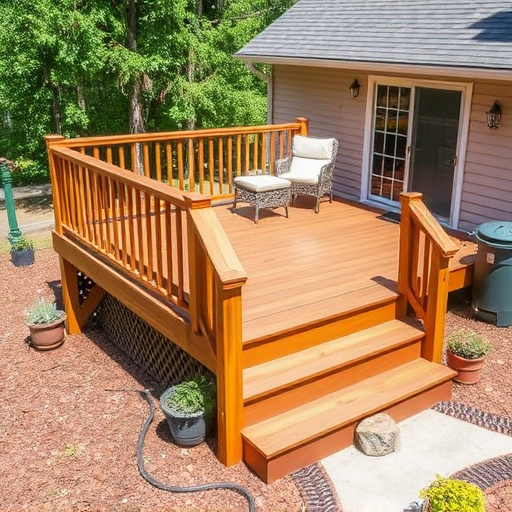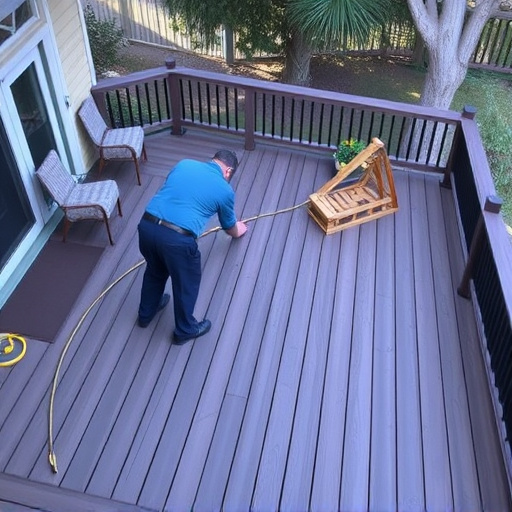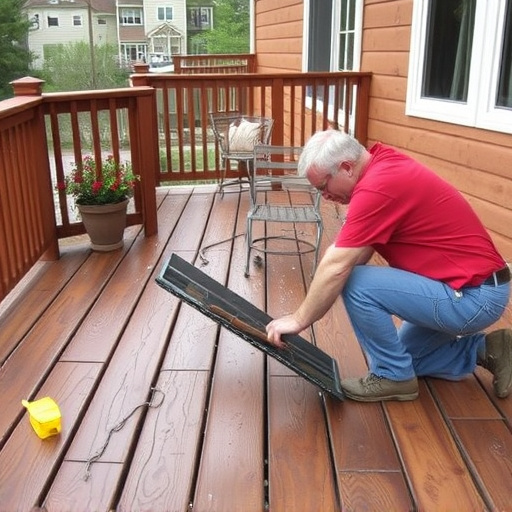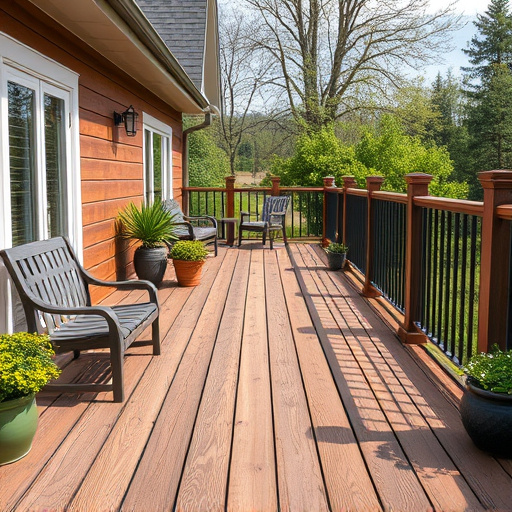Proper deck staining requires understanding and preparing surface conditions. Evaluate deck's age, weather exposure, and previous care to decide if sanding or stripping is needed. Sanding smoothes minor damage, while stripping removes all finish for heavily weathered decks. Removing old finishes ensures even stain adherence and rich, lasting color. Start with fresh, untreated wood for optimal curb appeal and property value.
“Unsure if your deck needs sanding or stripping before staining? This comprehensive guide unravels the mystery, offering insights into the optimal preparation for stunning deck staining results. Learn when to sand or strip, understanding the nuances of these techniques and their impact on your deck’s finish. Discover best practices to ensure a smooth, long-lasting transformation, enhancing your outdoor space with professional-grade deck staining.”
- Understanding When to Prepare Your Deck
- Sanding vs. Stripping: What's the Difference?
- Ensuring Optimal Staining Results After Preparation
Understanding When to Prepare Your Deck

Before applying a fresh coat of deck staining, it’s crucial to understand when your deck requires preparation through sanding or stripping. The condition of your deck’s surface plays a significant role in achieving a professional finish and long-lasting durability with deck staining products. If you’re noticing roughness, splinters, or an uneven texture, these are clear indicators that your deck needs some TLC before staining. Sanding removes loose or damaged wood fibers, ensuring the new stain adheres properly and creates a smooth base.
Regular maintenance, including cleaning and sealing, is essential in determining when to prepare your deck for staining. Debris buildup, dirt, and previous sealers can hinder the bonding process of new stain applications. By evaluating the current state of your deck—considering factors like age, weather exposure, and previous care—you’ll be able to decide whether it’s best to start with sanding or stripping old finish to prepare for a fresh coat of commercial siding or roofing products designed specifically for decks.
Sanding vs. Stripping: What's the Difference?

When considering preparation for deck staining, understanding the distinction between sanding and stripping is essential. Sanding involves using abrasive materials to smooth out the surface, removing loose or damaged paint or wood fibers. This process is often recommended for minor repairs and freshening up a deck’s appearance before staining. On the other hand, stripping refers to the removal of the entire finish, including old paint and stain layers, down to the bare wood. Stripping is typically required when dealing with heavily weathered decks or when switching from one type of finish (like paint) to another (stain).
Both methods have their pros and cons, especially considering related services like commercial roofing, siding, and gutters. While sanding is quicker and less invasive, it might not address deep-set issues. Stripping ensures a clean slate but takes more time and effort. The choice depends on the deck’s current condition and your desired outcome, with each approach playing a vital role in achieving a professional-looking deck staining finish.
Ensuring Optimal Staining Results After Preparation

Achieving optimal deck staining results requires proper preparation. Before applying any stain, it’s crucial to sand or strip away existing finishes, especially if there’s old paint or sealer on the wood. This initial step ensures that the new stain adheres evenly and penetrates deeply into the wood fibers, enhancing the overall aesthetics and durability of your deck. A smooth, clean surface allows for a more even application of the stain, resulting in a richer, longer-lasting color.
Proper preparation is key to not just achieving good, but excellent deck staining. If you’re considering siding services or residential roofing as part of your home improvement plans, remember that deck staining can significantly enhance the curb appeal and value of your property. Whether you opt for a vibrant hue or a more subtle shade, starting with fresh, untreated wood will ensure your final results are nothing short of spectacular.
When preparing your deck for staining, knowing when to sand or strip is crucial for achieving optimal results. By understanding the unique needs of your deck’s surface and choosing the right preparation method—sanding for smoothing and new wood exposure or stripping for removing old finish—you’ll ensure a vibrant, lasting stain. Remember, proper preparation is key to a stunning, long-lasting deck staining project.














